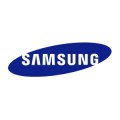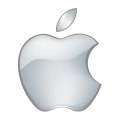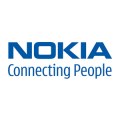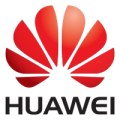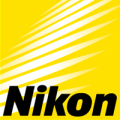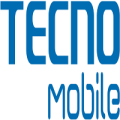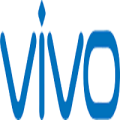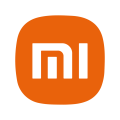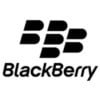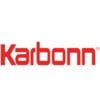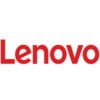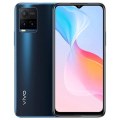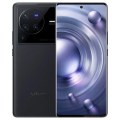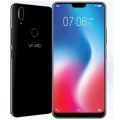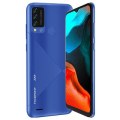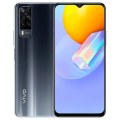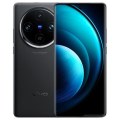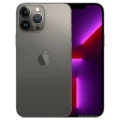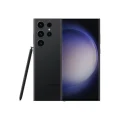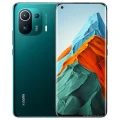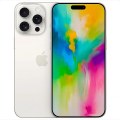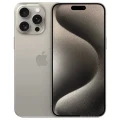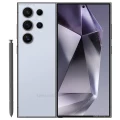- Awesome page
- Latest Mobile
- Smartphones
- Nothing Phone (2)
Nothing Phone (2)



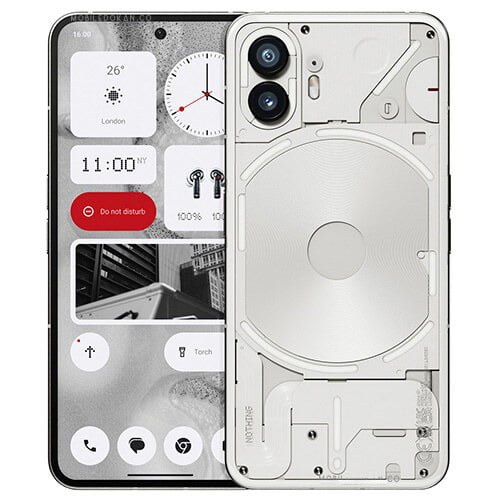
Nothing Phone (2) Price in Bangladesh
Nothing Phone (2) price in Bangladesh starts around BDT 68,000. The exact price can vary based on storage and RAM options.
Specifications
General
| Model | Nothing Phone (2) |
| Announced | 11 July, 2023 |
| Released | 17 July, 2023 |
| Status | Available |
| Unofficial price | 8GB 128GB ৳68,000 / 12GB 256GB ৳75,000 / 12GB 512GB ৳84,000 |
Design
| Dimensions | 162.1 x 76.4 x 8.6 mm (6.38 x 3.01 x 0.34 in) |
| Weight | 201.2 g (7.09 oz) |
| Colors |
White, Dark Gray |
Network
| Technology | GSM / HSPA / LTE / 5G |
| 2G Network |
GSM 850 / 900 / 1800 / 1900 - SIM 1 & SIM 2 |
| 3G Network |
HSDPA 800 / 850 / 900 / 1700(AWS) / 1800 / 1900 / 2100 |
| 4G Network | LTE |
| 5G Network |
SA/NSA |
| GPRS <strong>GPRS</strong> (General Packet Radio Service) is a packet oriented mobile data service on the 2G and 3G cellular communication system's global system for mobile communications (GSM), Generally, GPRS is used for the purpose of wireless data transfer, such as sharing pictures and videos or browsing the Internet via a mobile phone connection. | |
| EDGE <strong>EDGE</strong> (Enhanced Data GSM Environment) is a wireless network technology generally considered the next step in the 2G network offers data transfer rates up to four times faster than ordinary GSM networks, Generally, EDGE is used for the purpose of wireless data transfer, such as sharing pictures and videos or browsing the Internet via a mobile phone connection. | |
| Speed | HSPA 42.2/5.76 Mbps, LTE-A, 5G |
Display
| Display Type <strong>Display Technology => </strong> A number of display technologies and types used in mobile phones => TFT (Thin Film Transistor), IPS (In-Place Switching), OLED (Organic Light Emitting Diode), AMOLED (Active-Matrix Organic Light-Emitting Diode), Super AMOLED (an even advanced version of AMOLED), Resistive Touchscreen (Resistive touchscreens contain two layer of conductive material with a very small gap between them which acts as a resistance), Capacitive Touchsceen (Capacitive touchscreen technology consists of a layer of glass coated with a transparent conductor) | LTPO OLED capacitive touchscreen, 1B colors |
| Size | 6.7 inches, 108.0 cm2 (~87.2% screen-to-body ratio) |
| Resolution | 1080 x 2412 pixels, 20:9 ratio (~394 ppi density) |
| Features |
120Hz, HDR10+, 1600 nits (HBM), 1600 nits (peak) Always On Display |
Camera
Main camera
| Camera Setup | Dual |
| Primary <strong>Camera</strong> is able to capture photographs and usually videos, The most important characteristics of a camera are the resolution (measured in megapixels), lens focus type (fixed or automatic), higher megapixel cameras are known to capture higher quality photos, but not always a good measurement of the photos quality. |
50 MP, f/1.9, 24mm (wide), 1/1.56&quot;, 1.0µm, PDAF, OIS 50 MP, f/2.2, 114˚ (ultrawide), 1/2.76&quot;, 0.64µm, AF |
| Features |
LED flash, panorama, |
| Video | 4K@30fps, 1080p@30/60fps, gyro-EIS, live HDR |
Selfie camera
| Camera Setup | Single |
| Primary <strong>Camera</strong> is able to capture photographs and usually videos, The most important characteristics of a camera are the resolution (measured in megapixels), lens focus type (fixed or automatic), higher megapixel cameras are known to capture higher quality photos, but not always a good measurement of the photos quality. |
32 MP, f/2.5, (wide), 1/2.74&quot;, 0.8µm |
| Features | HDR |
| Video | 1080p@30fps |
Hardware
| Chipset <strong>Chipset</strong> is a group of integrated circuits designed to perform one or a more dedicated functions, often with real time computing constraints, Popular smartphones are equipped with more advanced embedded chipsets that can do many different tasks depending on their programming. | Qualcomm SM8475 Snapdragon 8+ Gen 1 (4 nm) |
| CPU <strong>CPU</strong> (Central Processing Unit) mostly known as processors, CPU processes instructions in order to carry out certain functions that make your device operate properly. Processors are often described as the brain of computers, smartphones and tablets, Smartphones and tablets rely on processors to carry out their every task, Processors are an incredibly important factor in selecting any type of computing device, including your smartphone. | Octa-core (1x3.0 GHz Cortex-X2 & 3x2.5 GHz Cortex-A710 & 4x1.80 GHz Cortex-A510) |
| GPU <strong>GPU</strong> (Graphics Processing Unit) is a single-chip processor designed to rapidly manipulate and alter memory to accelerate the creation of images in a frame buffer intended for output to a display, This includes things such as lighting effects, object transformations, and 3D motion. | Adreno 730 |
| RAM (Memory) <strong>RAM</strong> (Random Access Memory) is a type of computer memory that can be accessed randomly, any byte of memory can be accessed without touching the preceding bytes that allows information to be stored and accessed quickly from random locations. RAM is the most common type of memory found in computer systems, smartphones, tablets and other electronic devices. | 8/12 GB |
| Internal Storage <strong>Internal Storage</strong> is a data storage space (flash memory) mostly used in smartphones, tablets and other electronic devices where operating system, apps, music, photos, videos, files and other user data Is stored. | 128/256/512 GB UFS 3.1 |
| Sensors <strong>Sensors</strong> are electronic components that detects and responds to some type of input from the physical environment. The specific input could be light, heat, motion, moisture, pressure and location, The output is generally a signal that is converted to use in computing systems, a location sensor, such as a GPS receiver is able to detect current location of your electronic device. |
Fingerprint (under display, optical), accelerometer, proximity, gyro, compass |
Connectivity
| Bluetooth <strong>Bluetooth</strong> is a wireless communications technology for exchanging data between mobile phones, headsets, computers and other network devices over short distances without wires, Bluetooth technology was primarily designed to support simple wireless networking of personal consumer devices. | 5.3, A2DP, LE` |
| Infrared <strong>Infrared</strong> connectivity is an old wireless technology used to connect two electronic devices. It uses a beam of infrared light to transmit information and so requires direct line of sight and operates only at close range. | |
| USB | USB Type-C 2.0, OTG |
| GPS <strong>GPS</strong> The Global Positioning System is a satellite-based radio navigation system, GPS permits users to determine their position, velocity and the time 24 hours a day, in all weather, anywhere in the world, In order to locate your position, your device or GPS receiver must have a clear view of the sky. | GPS (L1+L5), GLONASS (L1), BDS (B1I+B1c), GALILEO (E1), QZSS (L1), NavIC |
| NFC <strong>NFC</strong> (Near field communication) is a set of standards for smartphones and similar devices to establish peer-to-peer radio communications with each other by touching them together or bringing them into proximity, usually no more than a few inches. |
Battery
| Battery Type <strong>Battery Type => </strong> Cell phones run on various kinds of batteries depending on the manufacturer, phone size or shape and features. There are basically four types of cell phone batteries => Lithium Polymer, Lithium Ion, Nickel Metal Hydride and Nickel Cadmium. | Non-Removable Li-Po |
| Capacity <strong>Battery Capacity</strong> is a measure (typically in Amp-hr) of the charge stored by the battery, and is determined by the mass of active material contained in the battery. The battery capacity represents the maximum amount of energy that can be extracted from the battery under certain conditions. | 4700 mAh |
| Charging Charging | 45W wired, PD3.0, PPS, QC4, 100% in 55 min (advertised) 15W wireless, 100% in 130 min (advertised) 5W reverse wireless |
Nothing Phone 2 Review That Will Make You Rethink Your Next Smartphone
The smartphone market is buzzing with excitement over the Nothing Phone (2). With its sleek design, innovative features, and competitive price point, this new player is turning heads among tech enthusiasts, smartphone users, and early adopters. In this review, we’ll explore what sets the Nothing Phone (2) apart from the competition. From its unique transparent design to its impressive performance, we’ll cover everything you need to know before making your next smartphone purchase.
Design and Build Quality: A Closer Look
One of the standout features of the Nothing Phone (2) is its design. Unlike most smartphones on the market, the Nothing Phone (2) boasts a transparent back that reveals the inner workings of the device. This unique aesthetic not only makes it visually appealing but also sets it apart from the sea of similar-looking smartphones.
The build quality is equally impressive. The Nothing Phone (2) is crafted from high-quality materials, including an aluminum frame and Gorilla Glass front and back. This combination ensures durability while maintaining a premium feel in the hand. The phone is also lightweight, making it easy to carry around without feeling bulky.
In terms of ergonomics, the Nothing Phone (2) is designed with user comfort in mind. The rounded edges and slim profile make it easy to hold, while the well-placed buttons provide a tactile and responsive experience. Overall, the Nothing Phone (2) excels in both design and build quality, making it a top contender for those who value aesthetics and durability.
Exploring the Operating System and User Interface
The Nothing Phone (2) runs on a custom version of Android, known as NothingOS. This operating system is designed to provide a clean and minimalistic user experience, free from bloatware and unnecessary features. The interface is intuitive, with a focus on simplicity and ease of use.
One of the key features of NothingOS is its customization options. Users can personalize their home screen, app icons, and overall theme to suit their preferences. The operating system also includes a range of useful widgets and shortcuts, making it easy to access frequently used apps and functions.
In addition to its user-friendly interface, NothingOS is optimized for performance. The operating system is lightweight and efficient, ensuring smooth and responsive performance even during heavy usage. Whether you’re multitasking, gaming, or streaming, NothingOS delivers a seamless experience.
Performance Analysis: Speed, Battery Life, and Camera Quality
When it comes to performance, the Nothing Phone (2) does not disappoint. Powered by the latest Snapdragon processor, this smartphone offers lightning-fast speed and responsiveness. From launching apps to browsing the web, everything feels quick and snappy.
Battery life is another area where the Nothing Phone (2) excels. With a large battery capacity and efficient power management, this smartphone can easily last a full day on a single charge. Even with heavy usage, including gaming and streaming, you won’t have to worry about running out of battery.
The camera quality is also impressive, with a dual-lens setup that captures stunning photos and videos. The primary camera delivers sharp and detailed images, while the secondary camera offers excellent depth and bokeh effects. The camera app is user-friendly, with a range of shooting modes and editing options to enhance your photos.
Comparison with Competing Smartphones in the Market
In a market saturated with smartphones, the Nothing Phone (2) stands out for its unique design and impressive performance. But how does it compare to other popular smartphones in the same price range?
When compared to the iPhone 12, the Nothing Phone (2) offers a more customizable user experience with its NothingOS. While the iPhone 12 boasts a sleek design and powerful performance, the Nothing Phone (2) matches these features while offering a more affordable price point.
Against the Samsung Galaxy S21, the Nothing Phone (2) holds its own in terms of performance and camera quality. However, the transparent design of the Nothing Phone (2) gives it a distinctive edge, appealing to users who want a smartphone that stands out from the crowd.
Compared to the Google Pixel 5, the Nothing Phone (2) offers similar performance and camera capabilities. However, the customizable NothingOS and unique design make it a more appealing option for those who value personalization and aesthetics.
User Experience: Real-World Testing and Feedback
To get a better understanding of the Nothing Phone (2)’s performance in real-world scenarios, we conducted extensive testing and gathered feedback from users. The overall response was overwhelmingly positive, with users praising the phone’s design, performance, and user interface.
Many users highlighted the phone’s smooth and responsive performance, even during demanding tasks such as gaming and multitasking. The battery life was also a common point of praise, with users appreciating the phone’s ability to last a full day on a single charge.
The camera quality received high marks as well, with users noting the sharpness and detail of the photos and videos. The customizable interface and clean design of NothingOS were also well-received, with users enjoying the ability to personalize their phone to suit their preferences.
The Future of Nothing Phone: Potential in the Market
The Nothing Phone (2) has already made a strong impression in the smartphone market, and its future looks promising. With its unique design, impressive performance, and user-friendly interface, this smartphone has the potential to become a major player in the industry.
One of the key factors driving the Nothing Phone (2)’s success is its commitment to innovation. The company behind the phone is dedicated to pushing the boundaries of smartphone design and technology, and this forward-thinking approach is likely to resonate with tech enthusiasts and early adopters.
Additionally, the affordability of the Nothing Phone (2) makes it an attractive option for a wide range of users. By offering a premium smartphone experience at a competitive price, the Nothing Phone (2) is positioned to capture a significant share of the market.
Conclusion: Final Thoughts and Recommendations for Different User Types
In conclusion, the Nothing Phone (2) is a standout smartphone that offers a unique blend of design, performance, and user experience. Whether you’re a tech enthusiast, a smartphone user, or an early adopter, this phone has something to offer.
For those who value aesthetics and build quality, the Nothing Phone (2)’s transparent design and high-quality materials make it a top choice. If you prioritize performance, the powerful processor and long-lasting battery will meet your needs. And for users who enjoy customization and a clean user interface, NothingOS delivers a seamless experience.
Overall, the Nothing Phone (2) is a compelling option for anyone in the market for a new smartphone. With its innovative features and competitive price point, it’s a device that’s worth considering for your next upgrade. To experience the Nothing Phone (2) for yourself, visit the official website and explore the options available.
